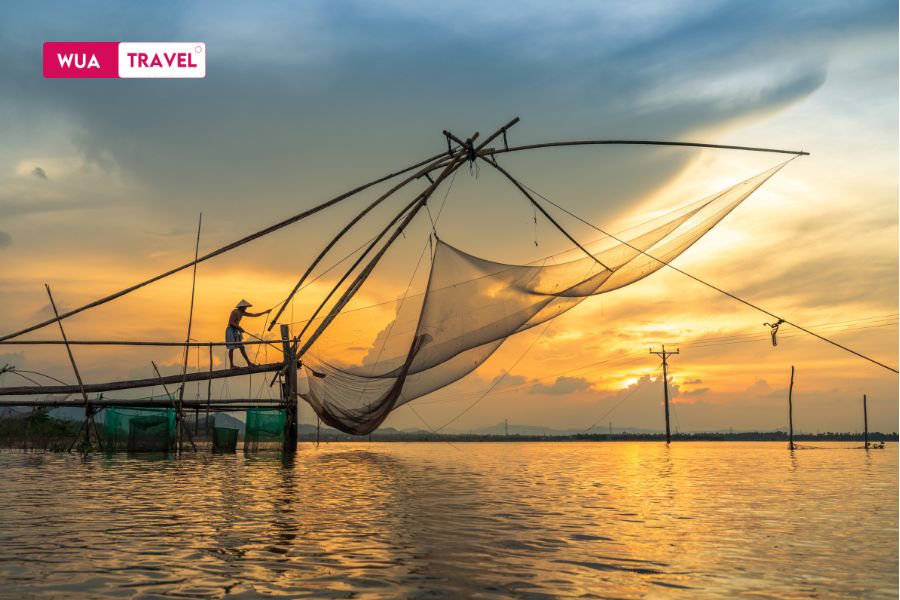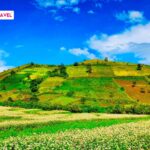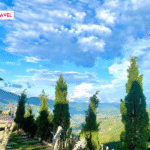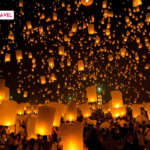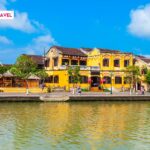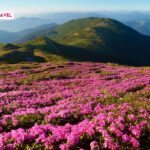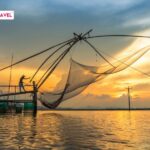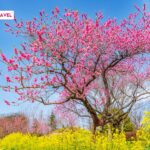Have you ever stood in the middle of the vast rice fields in the West, feeling the breeze carrying the scent of the alluvial soil? Or have you ever sat on a small boat, weaving through the canals of the Mekong Delta, and suddenly heard the cry of a fruit seller echoing in the quiet space? The South always has its own way of capturing the hearts of travel enthusiasts like me. However, to truly love and understand this land, choosing the right time to visit is an indispensable factor.
With trips through the hot sunny season, the rainy season, and even the bustling festival days, I want to share with you my experience about the most ideal time to explore the South – where each season, each month has its own beauty. Are you ready?
Overview
Nam Bo is a region located in the South of Vietnam, famous for its diversity of landscapes and cultures. This is a land of vibrant cities, vast rice fields, and a dense network of rivers typical of life in the river region. Nam Bo attracts not only by its natural beauty but also by its harmonious blend of modernity and unique tradition.
In terms of seasons, the South has two distinct main seasons: the dry season lasts from November to April with warm, sunny weather and clear skies, very favorable for outdoor activities and beach tourism. The rainy season from May to October often has short showers, making the landscape greener and cooler. The change between the two seasons creates a distinct liveliness, making the South always attractive to tourists all year round.
Geographically, Southern Vietnam consists of two main regions: the Mekong Delta and the Southeast.
Mekong DeltaWith its dense river system, lush green rice fields and unique floating markets, it is an ideal destination to experience river and garden life.
Southeastincluding bustling Ho Chi Minh City and coastal areas such as Vung Tau, Phu Quoc with many beautiful beaches and attractive resorts, suitable for sea tourism and modern cultural exploration.
Best time to visit south vietnam
Best time to visit southern vietnamis from December to April. The weather is stable, sunny, little rain, convenient for traveling and sightseeing.
Dry Season (November – April)
The dry season is the best time to travel to Southern Vietnam. The average temperature is from 25°C to 33°C, the weather is warm and sunny, there is little rain and the air is dry, favorable for outdoor activities such as sightseeing, cultural exploration and relaxation. This is also the season of many unique festivals, creating a vibrant and attractive atmosphere.
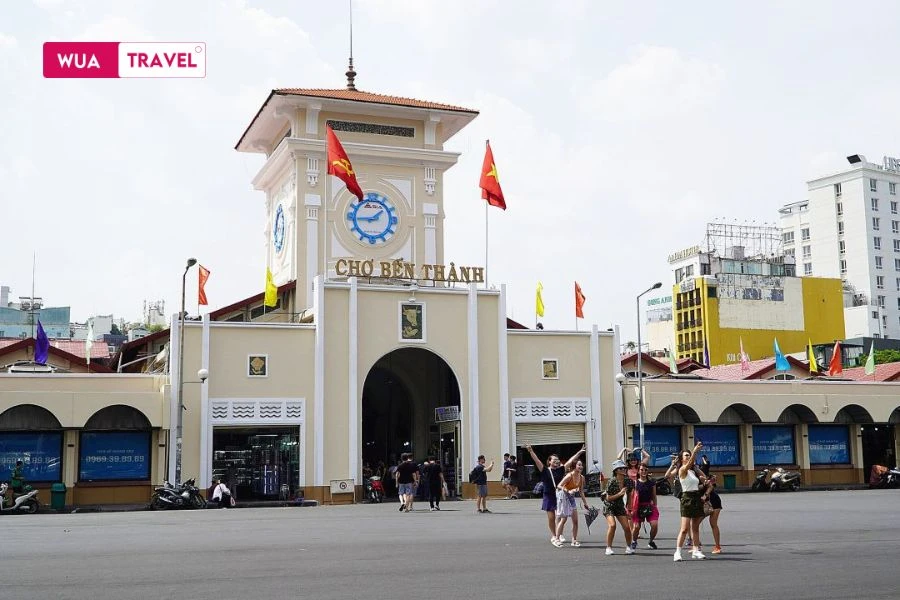
In the dry season, you can easily visit Ho Chi Minh City with famous tourist attractions such as Nguyen Hue walking street, Ben Thanh market; explore the Mekong Delta with Cai Rang floating market in Can Tho, My Tho fruit garden, Ben Tre; or enjoy the blue sea, white sand in Vung Tau, Phu Quoc. The favorable weather helps you move comfortably and enjoy the trip.
Rainy Season (May – October)
The rainy season in the South is cooler, ranging from 24°C to 30°C, with occasional showers. Although the rain can cause disruption, the landscape is much greener and cooler. The rainy season is suitable for those who love nature, want to experience peace and avoid crowds.
During the rainy season, you can explore less populated areas such as Dong Thap Muoi with its pristine wetlands, or Cat Tien National Park – a rich and diverse ecosystem. This is also a good time to experience local life and feel the slower, gentler pace of life in the South.
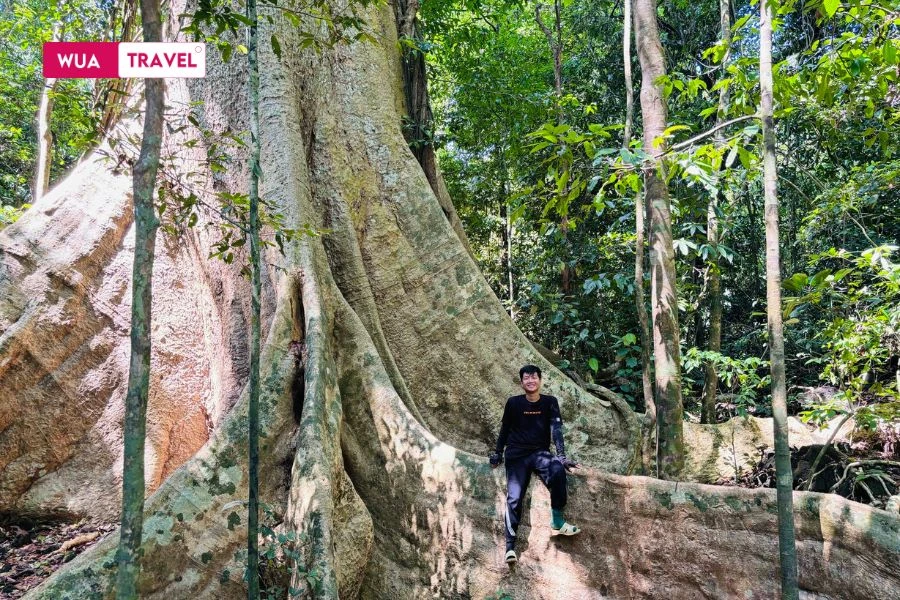
Weather and Festivals by Month in Southern Vietnam
Southern Vietnam has a typical tropical climate, each month of the year brings its own unique experiences and weather conditions. Understanding the characteristics of each month will help you choose the most suitable time for your trip, from pleasant sunny days to cool weather or lush green rainy season scenery. Let’s take a look at the characteristics of each month, average temperatures and outstanding destinations you should not miss.
January: Bustling Spring and Colorful Lunar New Year
The average temperature is 25–30°C (77–86°F). This is the beginning of the year with cool, dry weather and warm sunshine. The atmosphere of Tet is everywhere, creating a bustling and colorful atmosphere. You can enjoy outdoor activities such as visiting Nguyen Hue walking street, Ben Thanh market in Ho Chi Minh City or experiencing Cai Rang floating market, Western fruit gardens in Can Tho, My Tho. The favorable weather makes it easy for you to travel and explore the typical river land of the South.
February: Spring Festival and Early Fruit Garden
Temperatures range from 26–31°C (79–88°F). The weather remains dry, with little rain and lots of sunshine. This is the spring festival season with special cultural events taking place in many southern provinces, especially Dong Thap and Can Tho. Visitors can explore traditional craft villages, enjoy fresh spring fruits and immerse themselves in the atmosphere of folk festivals. This is also an ideal time to visit ecological areas and fruit gardens in the West.
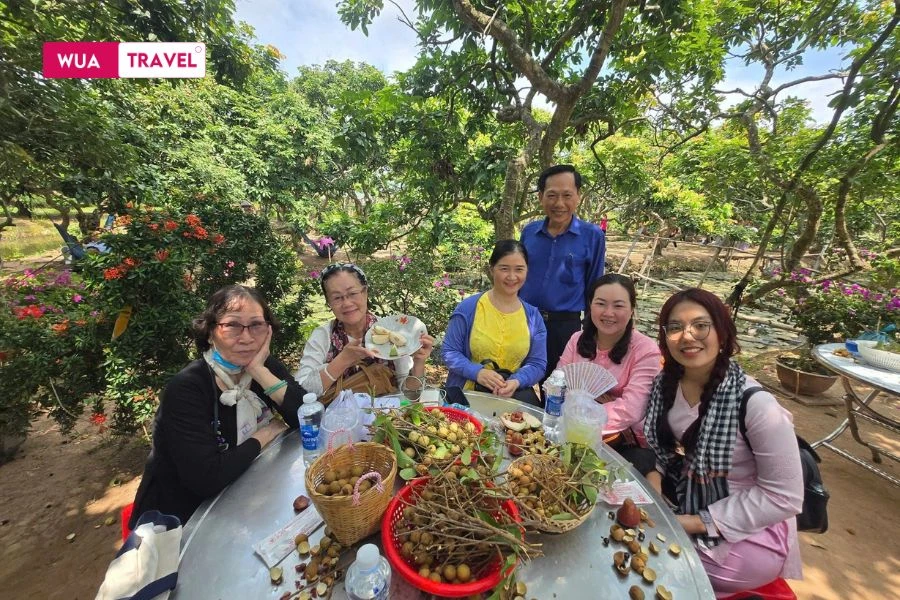
March: Warm Sunshine and Inviting Blue Sea
Temperatures range from 27–32°C (81–90°F). The weather starts to get hotter, with intense sunshine but still dry. This month is a great time to explore beaches like Vung Tau and Phu Quoc with their white sand and clear blue sea. In Ho Chi Minh City, you can visit historical sites, museums, or enjoy rich cuisine at famous markets and restaurants. Be prepared with sunscreen and enough water when traveling outdoors.
April: Discover the Southern Summer Sun
Temperatures range from 28–33°C (82–91°F). This is the hottest month of the year with intense sunshine and little rain. The weather is suitable for long beach vacations in Phu Quoc, Vung Tau or exploring the wild nature in Con Dao. Visitors need to prepare carefully for sun protection measures and stay healthy when participating in outdoor activities in the hot sun.
May: The Rainy Season Begins and Things Turn Green
Average temperatures are 27–31°C (81–88°F). The rainy season begins with occasional showers, often in the evening, making the landscape greener and cooler. This is an ideal time to explore the wetlands of Dong Thap Muoi and Cat Tien National Park with its diverse ecosystems. The cool climate and fresh air are suitable for ecotourism activities and visiting nature reserves.
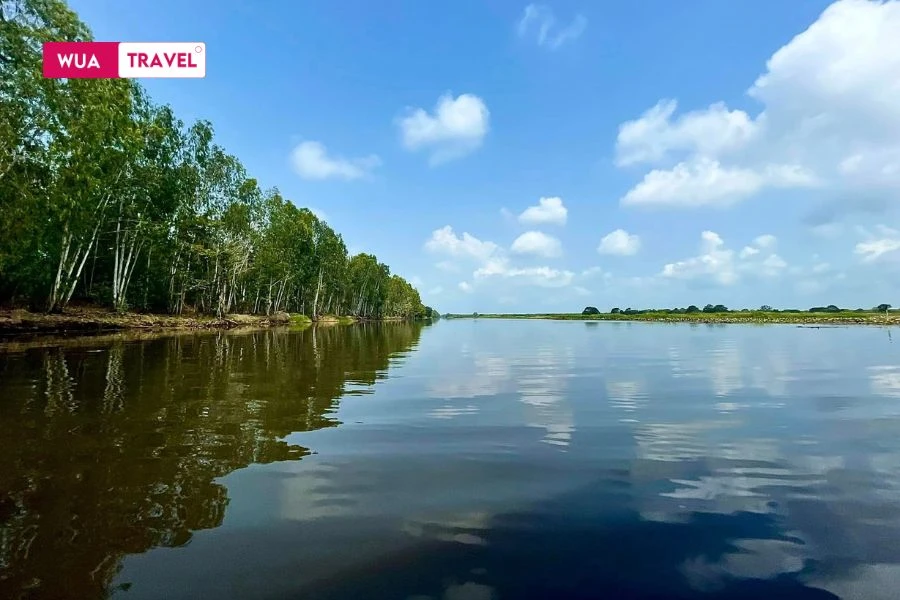
June: Discover the Beauty of Flood Season
Temperatures range from 26–30°C (79–86°F). Rain is still frequent but usually short, keeping the air fresh. June is a good month for exploring U Minh Thuong forest, Tram Chim bird garden and traditional craft villages in the West. Visitors can experience activities such as fishing, boating, or strolling on cool green canals.
July: Green and Eco-Tourism Month
Temperatures range from 26–30°C (79–86°F). Rainfall is still fairly steady, keeping the landscape green and cool. July is an ideal time to avoid crowds, explore eco-tourism areas, and experience the cultural life of the West. You can join fruit garden tours, go fishing, or explore traditional craft villages with strong local cultural features.
August: Western Fruits and Festival Season
Temperatures range from 26–30°C (79–86°F). Rain is frequent and abundant, and the natural landscape is lush. This is the fruit harvest season in the West with famous fruits such as durian, mangosteen, rambutan, and oranges in Tien Giang and Ben Tre. Visitors can enjoy the fruit right in the garden and participate in unique cultural festivals taking place in the area.
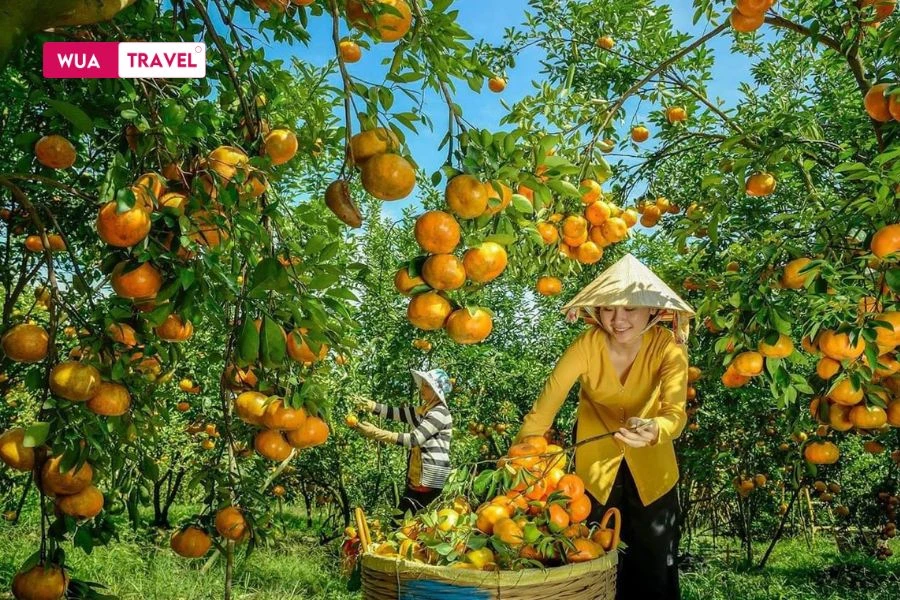
September: Mild Autumn and Pleasant Weather
Temperatures drop slightly, from 25–29°C (77–84°F). Rain begins to ease, and the weather becomes cooler and more pleasant. September is an ideal time to explore nature reserves, traditional fishing villages, and experience southern ecotourism. The favorable weather is also suitable for outdoor activities and sightseeing.
October: Dry Season Transition and Time to Relax
Average temperatures range from 25–29°C (77–84°F). October is the transition from the rainy season to the dry season, so the weather is drier, the rain gradually decreases, the air is fresh and very pleasant. This is a great time to enjoy outdoor activities such as visiting historical sites in Ho Chi Minh City (Independence Palace, War Remnants Museum), exploring traditional markets and experiencing the Mekong Delta with its cool green canals. In addition, you can also visit rural areas such as Dong Thap or Tien Giang to immerse yourself in river life and enjoy late-season fruits.
November: The Dry Season Begins and Exploring the River Region
Temperatures range from 25–30°C (77–86°F), the dry season officially begins with cool weather and little rain. This is the ideal time to explore the beaches of Vung Tau and Phu Quoc with clear blue water and fine white sand. Fruit gardens in the West such as Dong Thap and Ben Tre are also in harvest season, very suitable for eco-tourism. Many traditional festivals and unique cultural events take place, bringing a lively atmosphere to visitors. The favorable weather is also very suitable for participating in outdoor activities such as fishing and boating.
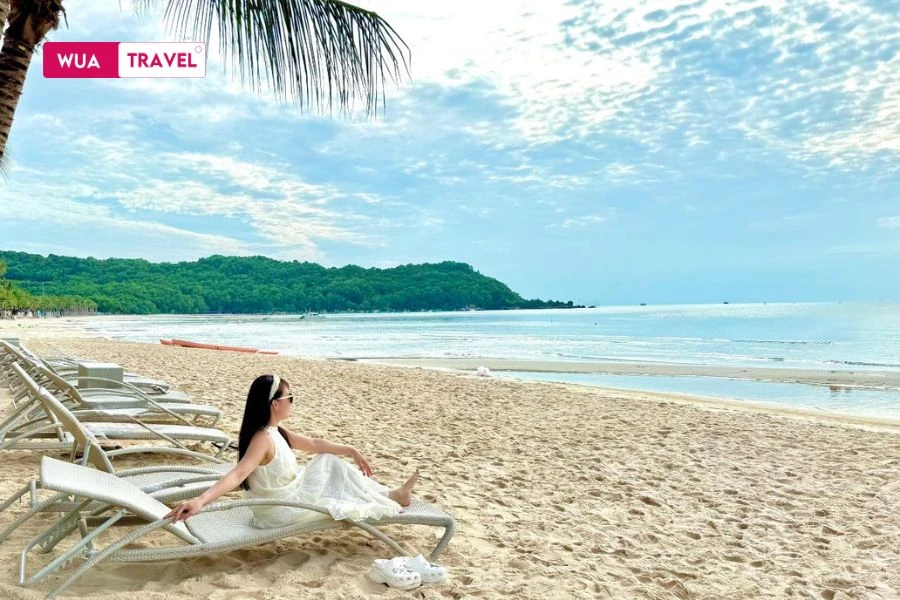
December: Festivals and Holiday Travel
Temperatures are stable at 25–30°C (77–86°F), the weather is dry, cool and pleasant. The last month of the year brings a bustling festive atmosphere with Christmas, Christmas and New Year events in Ho Chi Minh City and many other major cities. This is the peak time for beach tourism, especially in Phu Quoc and Vung Tau, with many visitors coming to relax. You can visit shopping centers, enjoy rich street food and immerse yourself in the festive atmosphere. The stable weather with mild sunshine is very suitable for outdoor activities and relaxing by the beach.
Discover the Beauty of the South by Region
Southern Vietnam is divided into two main regions, each with its own distinct charm, from the vibrant, modern Southeast to the peaceful, rustic beauty of the Southwest. Each region has its own ideal time for you to fully enjoy the beauty and unique experiences here.
Southeast: Vibrant and Modern Lifestyle
The Southeast is a vibrant economic and cultural center with Ho Chi Minh City as its focal point. The city is famous not only for its modern urban areas but also for its historical destinations such as the Independence Palace, the City Post Office, and the Notre Dame Cathedral. There are also bustling food streets, modern shopping centers, and colorful nightlife, making anyone who visits feel the excitement and prosperity.
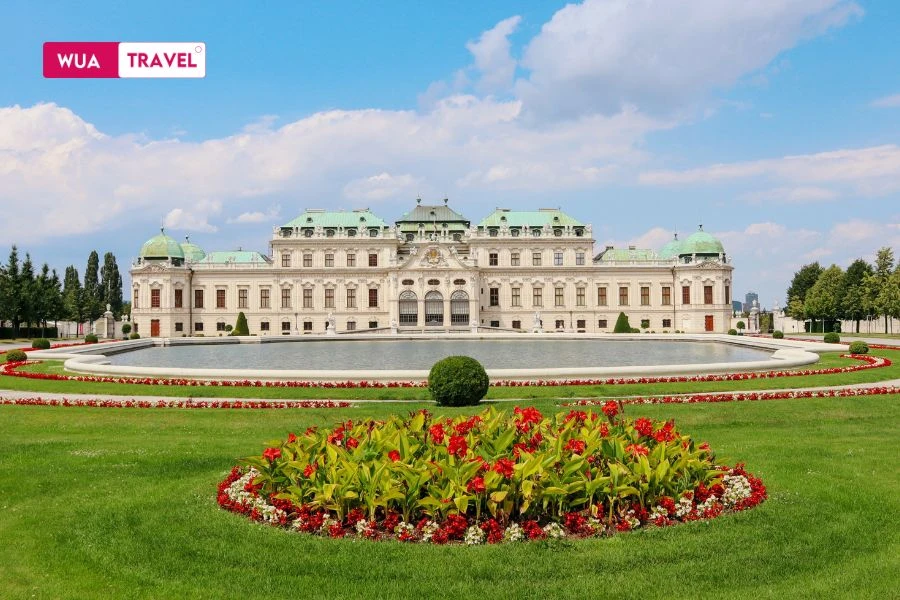
In addition to Ho Chi Minh City, the Southeast also has Vung Tau – a coastal city famous for its beautiful beaches, luxury resorts and fresh seafood. Dong Nai with Buu Long tourist area and Cat Tien national park offers a relaxing natural space. Binh Duong and Ba Ria-Vung Tau are equally attractive with unique eco-tourism areas and traditional craft villages.
Best time to visit:The Southeast is most suitable from November to April, when the dry season begins with cool weather, little rain, and mild sunshine, very favorable for visiting historical sites, relaxing on the beach or participating in outdoor activities.
Southwest (Mekong Delta)
The Southwest region has a peaceful beauty with a dense network of canals and a typical river life. Can Tho is the center of the region, famous for Cai Rang floating market – where you can experience the unique culture of buying and selling on the river. Fruit gardens in Ben Tre and Tien Giang offer the opportunity to enjoy fresh fruits and visit traditional craft villages.
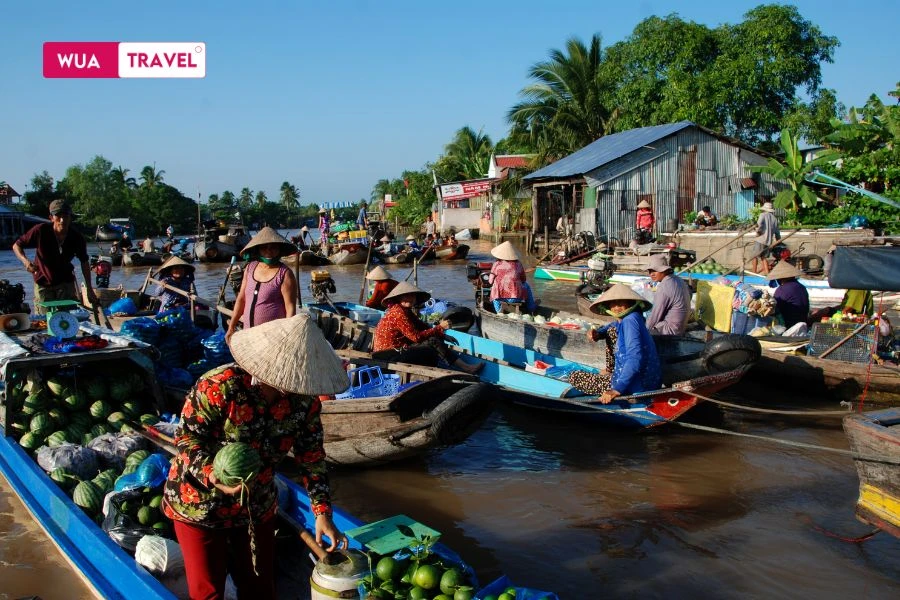
In addition, the Southwest also has Dong Thap with Tram Chim cajuput forest, An Giang with Tra Su cajuput forest and sacred Sam mountain. This is an ideal land for those who love nature and want to immerse themselves in the peaceful space of the river countryside. Unique cultural festivals such as the Ba Chua Xu festival are also highlights that attract tourists to learn about the cultural life of the people here.
Best time to visit:The Southwest is most beautiful from September to November, when the flood season brings majestic landscapes and rich ecosystems, or from December to April with dry, cool weather, very suitable for participating in eco-tours and exploring garden life.
Must-See Destinations in Southern Vietnam
Southern Vietnam is one of the most ideal destinations for domestic and foreign tourists, with the blend of modern excitement and traditional tranquility. Below are the most prominent places that you should visit to fully explore the beauty of this land.
Ho Chi Minh City: Vibrant, Modern, and Steeped in History
As the largest economic and cultural center in the South, Ho Chi Minh City offers a unique blend of ancient architecture and modern life. You can visit famous destinations such as the Independence Palace – a national historical symbol, the Notre Dame Cathedral – a beautiful French architectural work, and the City Post Office – a place that preserves the cultural imprint of the colonial period. The city also attracts tourists with the bustling Ben Thanh Market, culinary districts such as Nguyen Hue, and modern shopping areas such as Saigon Center or Vincom Dong Khoi.
Vung Tau: A Beach City With Peaceful Moments
Vung Tau is a famous coastal city, ideal for those who want to relax and enjoy the fresh air. Beaches such as Back Beach and Front Beach are ideal places for swimming, strolling, or simply watching the sunset. Vung Tau Lighthouse is a destination not to be missed with a panoramic view of the city. In addition, fresh seafood dishes at Xom Luoi market or coastal restaurants will surely satisfy food lovers.
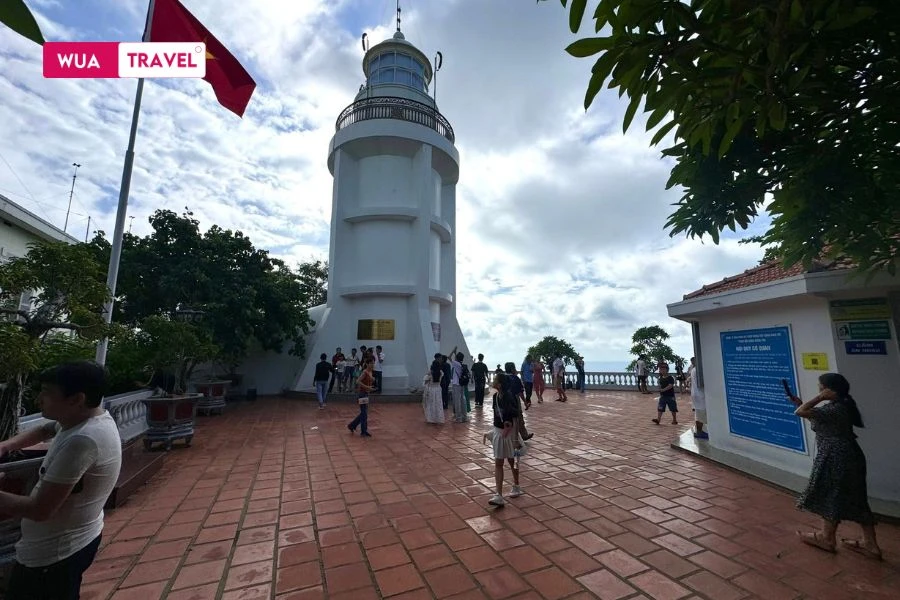
Phu Quoc: Ocean Paradise and Unique Culture
Known as the “Pearl Island,” Phu Quoc is a vacation paradise with long coastlines, clear blue waters, and luxurious resorts. Highlights include Sao Beach, one of the most beautiful beaches in Vietnam, Dinh Cau with its unique architecture, and the bustling Phu Quoc night market with many specialties. You can also explore pearl farms, pepper gardens, and fish sauce factories – cultural features of the island.
Can Tho: The Heart of the Western River Region
Can Tho is considered the heart of the Mekong Delta. Cai Rang Floating Market is the most unique highlight, where you can experience the culture of trading on the river. Ninh Kieu Wharf is a great place to stroll and enjoy the fresh air. The city is also famous for its lush fruit gardens and ancient houses such as Binh Thuy – where architectural and historical values are preserved.
Dong Thap: Peaceful Beauty and Natural Wonder
Dong Thap fascinates visitors with its peaceful natural scenery and vast lotus fields. Tram Chim Melaleuca Forest is one of the largest bird sanctuaries in Vietnam, ideal for activities such as bird watching, boating, and photography. Dong Sen Thap Muoi is the ideal place to immerse yourself in the peaceful scenery, enjoy the gentle scent of lotus and enjoy lotus specialties.
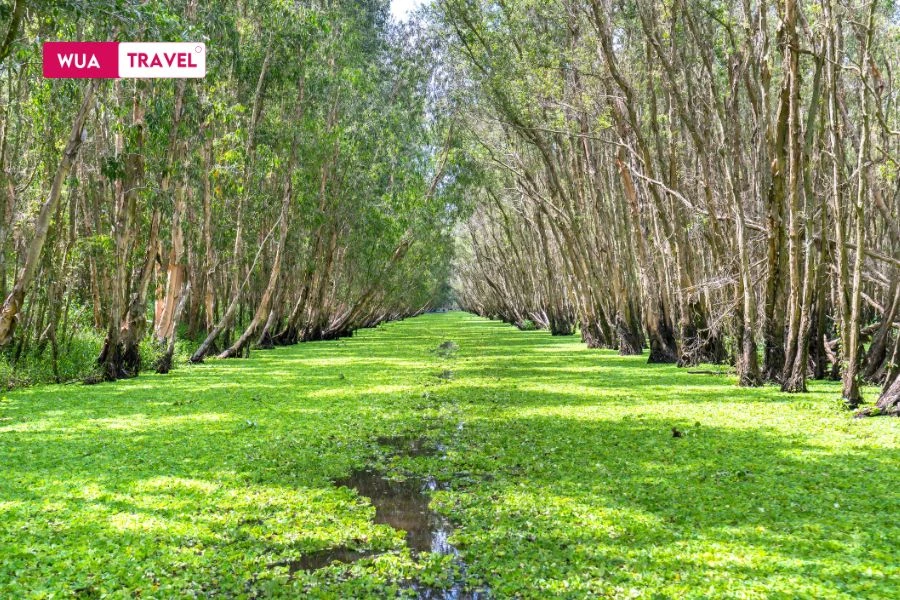
An Giang: Unique Festivals and Diverse Landscapes
An Giang is not only famous for its majestic natural landscape but also for hosting many unique cultural festivals. Tra Su Melaleuca Forest is a prominent destination, where you can row a boat through small canals and admire the rich flora and fauna ecosystem. Sam Mountain is a sacred place associated with the Ba Chua Xu festival. In addition, Ta Pa Lake with its blue water and peaceful scenery is also an attractive check-in spot.
Ben Tre: Fresh Green Garden and Unique Coconut Land
Ben Tre coconut land offers a fresh and quiet garden space. Fruit-laden orchards in Cai Mon, traditional villages making coconut candy and weaving are typical destinations. In addition, you can join eco-tours on the river, experience boating, or enjoy specialties of the West.
Outstanding activities in Southern Vietnam
Southern Vietnam is a rich land with many unique experiences. Here are some must-do activities to make the most of your trip.
Discover the river life in the West
The Mekong Delta is always an attractive destination thanks to its unique culture associated with the river system. One of the outstanding activities is visiting Cai Rang floating market (Can Tho), where you will see hundreds of small boats carrying fruits and agricultural products bustlingly trading. This is an opportunity to enjoy breakfast on the boat with a hot bowl of noodles, sip a cup of coffee and feel the river life of the Mekong Delta. In addition, you can also join tours to visit traditional craft villages, where people process coconut candy, rice paper or make pottery using traditional methods for generations.
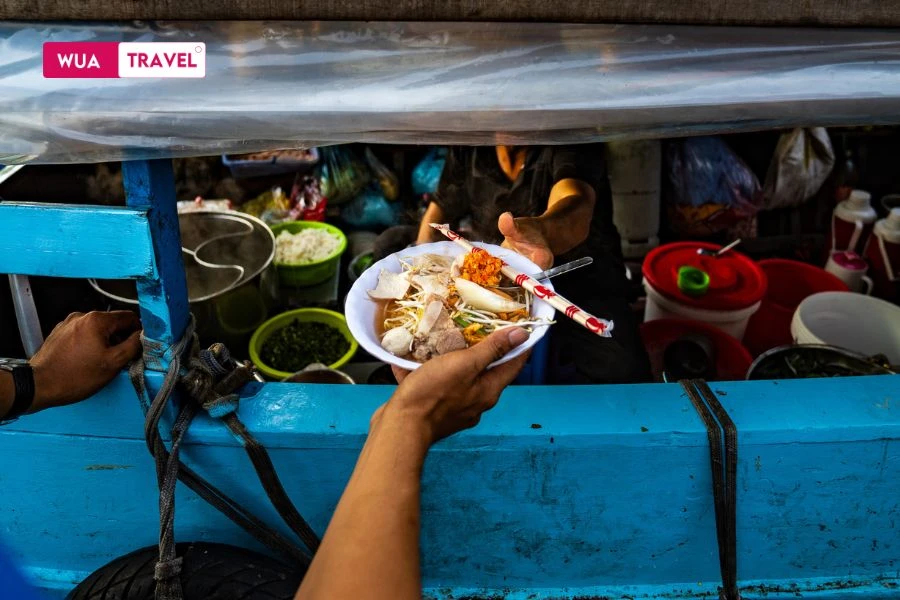
Join eco tours
The cajuput forests in the West such as Tram Chim (Dong Thap) or Tra Su (An Giang) are ideal destinations for those who love nature. You will sit on a boat, weave through small canals covered with green duckweed, watching flocks of birds flying freely in the sky.
In particular, during each flood season, the Melaleuca forest becomes more beautiful than ever with a rich flooded ecosystem. This is an opportunity for you to try your hand at activities such as boating, bird watching, and taking souvenir photos in a peaceful, green setting.
Experience the garden life
Fruit gardens in Tien Giang, Ben Tre or Vinh Long always attract tourists because of the variety and freshness of fruits such as rambutan, durian, mangosteen, and strawberries. You can pick the fruits yourself, enjoy them in the garden or buy them as gifts. And activities such as rowing a sampan through small canals, cooking with local people, or visiting coconut candy and weaving villages are also memorable experiences that help you understand more about the culture of the West.
Beach bathing and beach activities
Southern coastal cities such as Vung Tau, Phu Quoc, Ha Tien are not only famous for their white sand beaches but also have many interesting activities. You can dive to see coral in Phu Quoc, try your hand at water sports such as kayaking, windsurfing or fishing at sea.
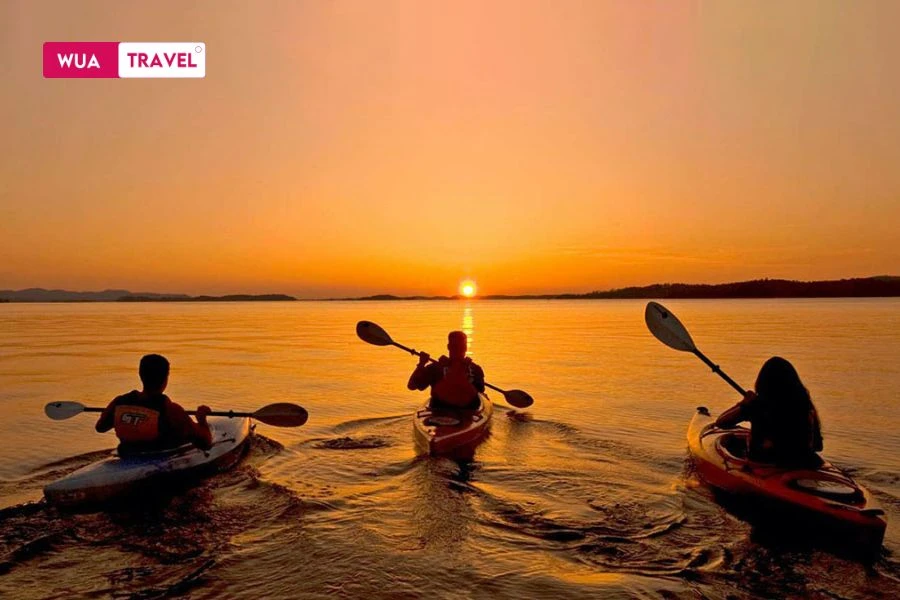
In Vung Tau, you cannot miss the experience of walking on Bai Sau beach, watching the romantic sunset at Nghinh Phong cape or climbing the lighthouse to admire the whole city.
Enjoy street food
Southern cuisine is always famous for its richness and rich flavors. In Ho Chi Minh City, you can explore culinary streets such as Nguyen Hue and Vinh Khanh, where you can find everything from sandwiches, noodles, pancakes, grilled pork vermicelli to traditional desserts.
In the West, typical dishes such as grilled snakehead fish, fish sauce hotpot or pia cake are choices not to be missed. In particular, each region has its own way of processing, bringing unique and new flavors.
Explore spiritual culture
The South is home to many famous spiritual sites. Sam Mountain (An Giang) is not only an attractive tourist destination but also the place where the sacred Ba Chua Xu festival is held. Ba Den Pagoda (Tay Ninh) is located on the highest mountain in the South, attracting tourists with its beautiful scenery and meaningful pilgrimage tours. In addition, Dinh Cau in Phu Quoc or ancient pagodas in Dong Thap and Can Tho are also destinations not to be missed for those who want to learn about the spiritual culture of the people of the South.
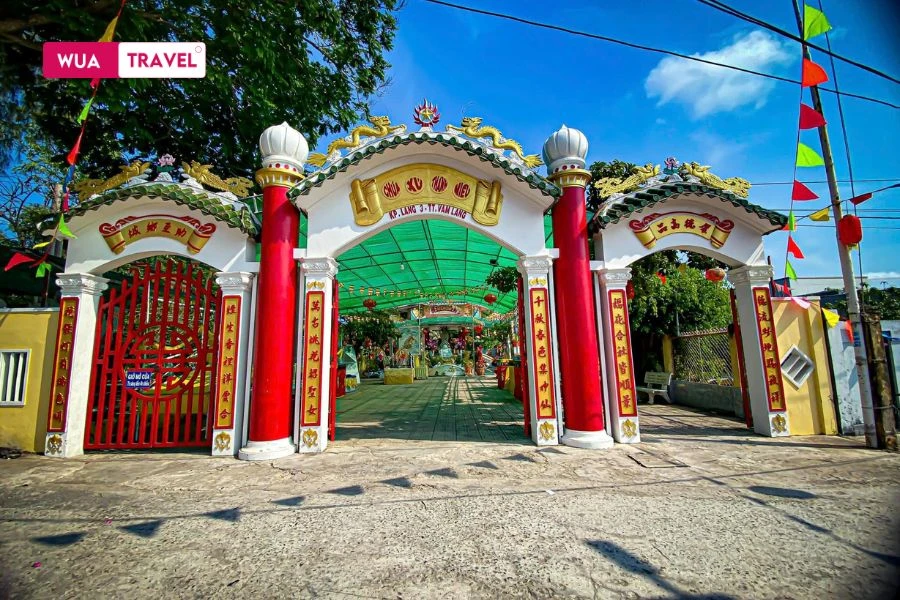
Visit historical sites
For those who love to learn about history, Ho Chi Minh City is home to iconic structures such as the Independence Palace, the War Remnants Museum and Notre Dame Cathedral. Each location carries interesting stories about Vietnamese history and culture. In addition, Binh Thuy ancient house (Can Tho) or historical sites in Dong Thap and An Giang also give you an insight into the life and development of this land through the ages.
Typical festivals of Southern Vietnam
Southern Vietnam is not only famous for its beautiful natural scenery but also possesses a rich and unique cultural treasure of festivals. Each festival is a traditional story closely linked to the beliefs, history and daily life of the local people. If you have the opportunity to visit the South, do not miss these vibrant and unique cultural experiences.
Ba Chua Xu Festival (An Giang)
The Ba Chua Xu Festival takes place in the fourth lunar month every year at Sam Mountain, Chau Doc, and is one of the largest and most famous festivals in the Southwest region. This is an occasion for people and visitors from all over to come and offer incense, pray for peace and luck for their families and society. The festival includes sacred rituals such as the procession of the Ba Chua Xu statue, worshiping ceremonies, along with folk cultural activities such as lion dances, operas, and traditional games. The festival atmosphere is bustling and colorful with tens of thousands of participants, creating a profound and interesting spiritual experience for visitors.
Ok Om Bok Festival (Soc Trang)
Ok Om Bok Festival, held in the 10th lunar month, is one of the unique cultural features of the Khmer people in the South. The festival is to thank the moon god for a bountiful harvest and pray for favorable weather. The festival is characterized by the ceremony of releasing sparkling water lanterns on the rivers, symbolizing the wishes for a peaceful life. Along with that are exciting Ngo boat races that attract a large number of viewers, demonstrating the spirit of solidarity and community strength. This is a rare opportunity for visitors to deeply learn about the traditional culture of the Khmer people.
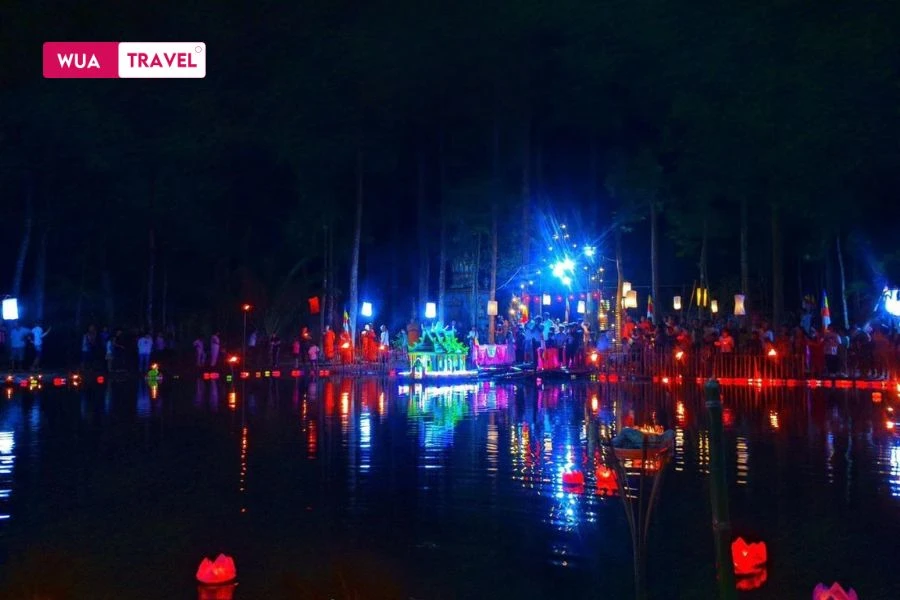
Lunar New Year and Lantern Festival (Southern region)
Tet Nguyen Dan is the biggest festival of the year, taking place at the beginning of the lunar year and is solemnly celebrated throughout the South. People prepare for Tet by cleaning their houses, decorating apricot trees, cooking banh tet and preparing traditional dishes. After Tet, the Nguyen Tieu festival is also very special, especially in the Cho Lon area (Ho Chi Minh City) with lion dances, dragon dances, lantern parades and art performances. The atmosphere of the Tet festival is imbued with tradition, giving visitors a sense of the warmth and reunion of Southern families.
Whale Festival (Ba Ria – Vung Tau)
Nghinh Ong Festival takes place in the 8th lunar month every year, is a big festival of fishermen in Ba Ria – Vung Tau coastal area. The festival aims to pray for a peaceful sea, calm winds and waves and a favorable fishing season. The center of the festival is the ritual of carrying the statue of Ong Nam Hai (whale) from the sea to the mainland with thousands of participants. In addition to the solemn ceremony, the festival also has fun activities, fairs and unique folk art performances, attracting a large number of people and tourists. This is an opportunity for you to learn more about the culture, beliefs and traditional fishing profession of the people of the South.
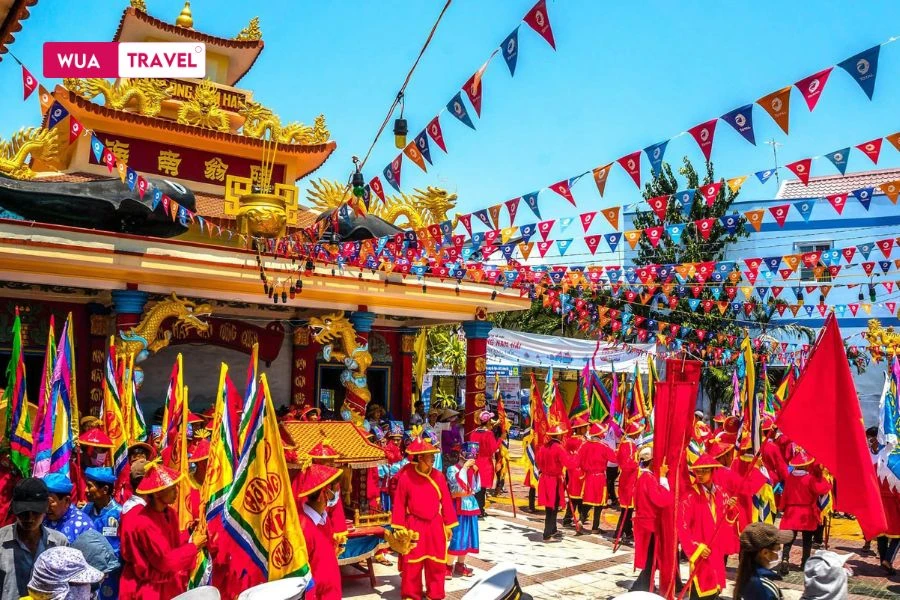
Southern Fruit Festival (Ho Chi Minh City)
Held in June at Suoi Tien tourist area, the Southern Fruit Festival is an opportunity to display and introduce a variety of regional specialty fruits such as durian, mangosteen, rambutan, mango, star apple, etc. Visitors not only enjoy delicious fresh fruits but also participate in art performances, folk games and creative fruit shaping competitions. The festival is an attractive destination for those who want to learn about the culinary culture and agricultural products of the South.
Floating markets and river trade culture (Western region)
Floating markets are a typical cultural symbol of the Southwest region, operating all year round but most bustling in the mornings. Floating markets such as Cai Rang (Can Tho), Cai Be (Tien Giang) bring a real experience of the river life of the people. Hundreds of small boats loaded with fruits, agricultural products, and goods are bustlingly traded on the river, creating a lively, colorful scene. This is also an opportunity for you to enjoy specialties right on the boat and explore the rustic, simple culture of the West.
Culture of amateur music (Southern region)
Don ca tai tu is one of the intangible cultural heritages recognized by UNESCO, a characteristic of the South. This art form thrives in the Western provinces with gentle, deep melodies and rustic lyrics imbued with rural love. Don ca tai tu is often performed during festivals, family gatherings or community activities. The experience of listening to Don ca tai tu not only helps you relax but also helps you understand more about the soul and traditional culture of the Southern people.
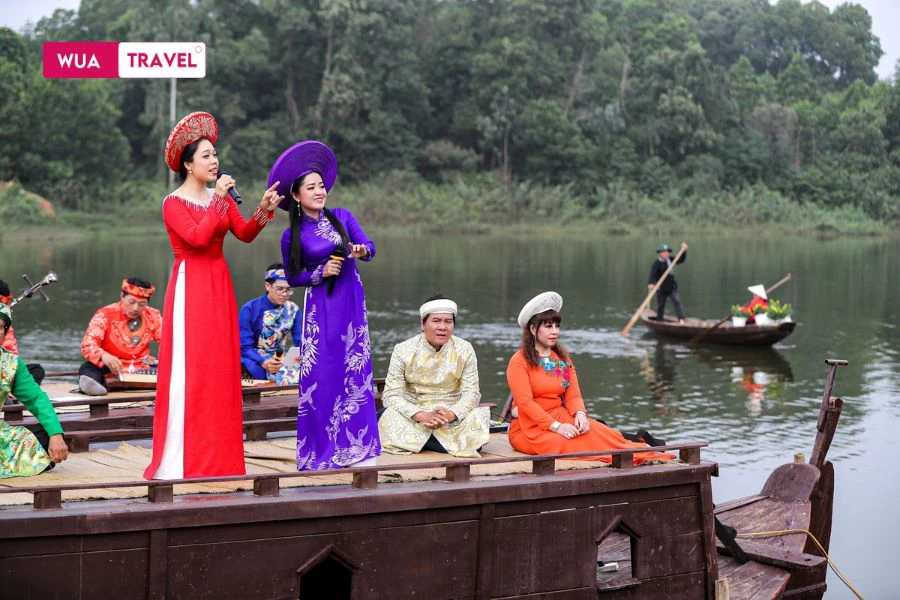
These festivals and cultural features will bring you authentic, profound and unforgettable experiences when coming to Southern Vietnam. Arrange the right time to participate and fully feel the vibrant, bustling spirit of this land.
Conclusion
Southern Vietnam attracts tourists not only by its diverse natural landscapes and pleasant climate but also by its rich, colorful culture with many unique traditional festivals. Experiencing festivals, cultural activities and unique landscapes will help you better understand the people, history and soul of this land. No matter what time of year you come, the South has interesting things to explore and enjoy. So, plan now to fully enjoy a memorable trip in Southern Vietnam!
